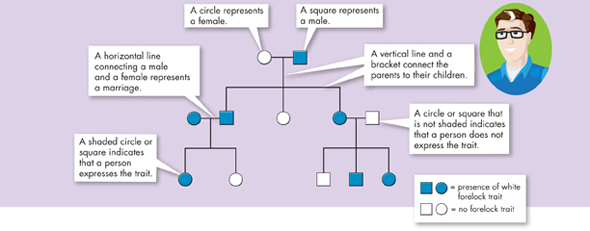
FIGURE 14–7 Pedigree Example This diagram shows what the symbols in a pedigree represent. Interpret Visuals What are the genotypes of both parents on the left in the second row? How do you know?
dBy analyzing a pedigree, we can often infer the genotypes of family members. For example, because the white forelock trait is dominant, all the family members in Figure 14–7 lacking this trait must have homozygous recessive alleles. One of the grandfather's children lacks the white forelock trait, so the grandfather must be heterozygous for this trait.
With pedigree analysis, it is possible to apply the principles of Mendelian genetics to humans.  The information gained from pedigree analysis makes it possible to determine the nature of genes and alleles associated with inherited human traits. Based on a pedigree, you can often determine if an allele for a trait is dominant or recessive, autosomal or sex-linked.
The information gained from pedigree analysis makes it possible to determine the nature of genes and alleles associated with inherited human traits. Based on a pedigree, you can often determine if an allele for a trait is dominant or recessive, autosomal or sex-linked.
14.1 Assessment

-
Review What are autosomes?
Explain What determines whether a person is male or female?
Propose a Solution How can you use karyotypes to identify a species?
-
Review Explain how sex-linked traits are inherited.
Predict If a woman with type O blood and a man with type AB blood have children, what are the children's possible genotypes?
-
Review What does a pedigree show?
Infer Why would the Y chromosome be unlikely to contain any of the genes that are absolutely necessary for survival?
VISUAL THINKING
Choose a family and a trait, such as facial dimples, that you can trace through three generations. Find out who in the family has had the trait and who has not. Then, draw a pedigree to represent the family history of the trait.

Table of Contents
- Formulas and Equations
- Applying Formulas and Equations
- Mean, Median, and Mode
- Estimation
- Using Measurements in Calculations
- Effects of Measurement Errors
- Accuracy
- Precision
- Comparing Accuracy and Precision
- Significant Figures
- Calculating With Significant Figures
- Scientific Notation
- Calculating With Scientific Notation
- Dimensional Analysis
- Applying Dimensional Analysis




